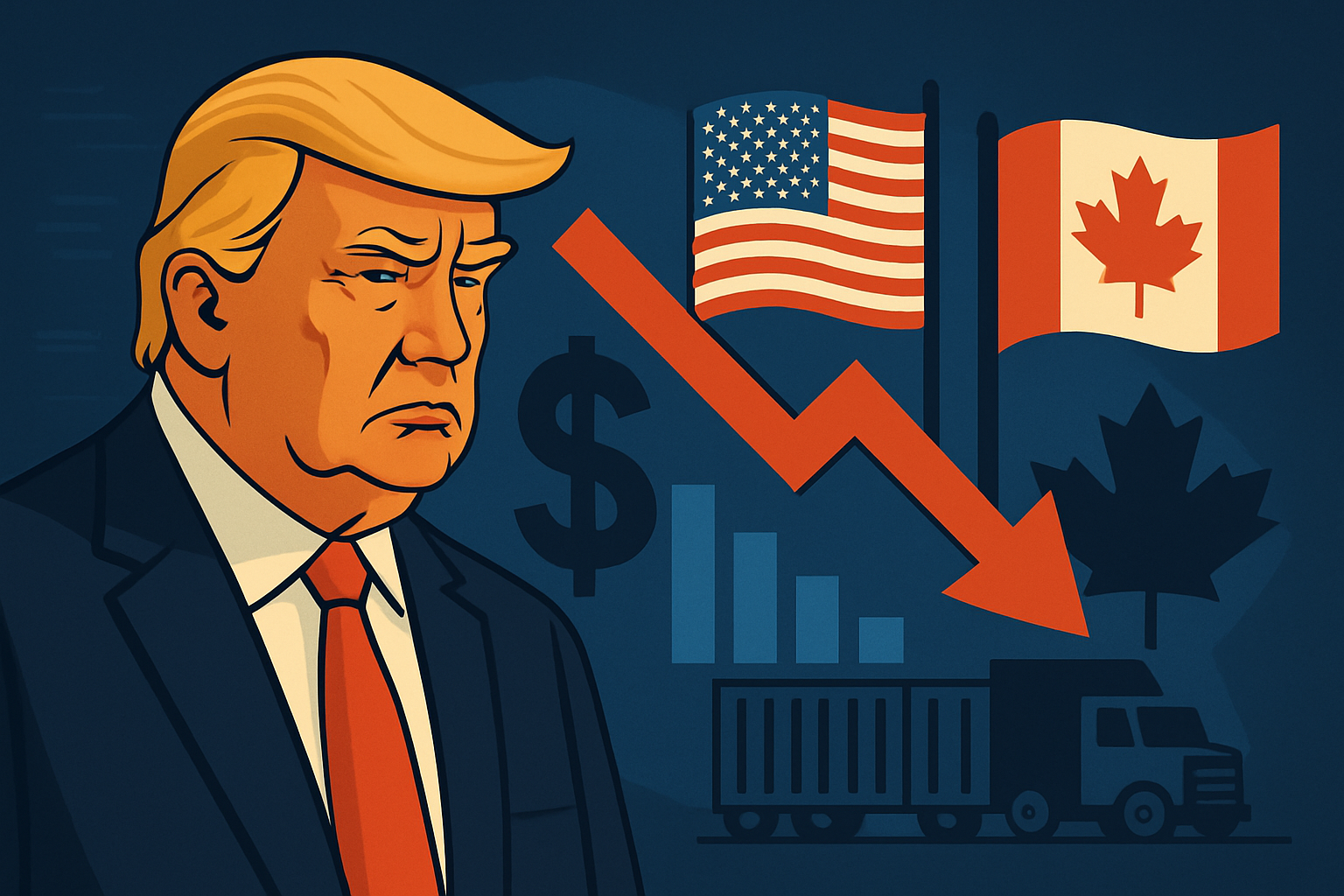Rising Cross-Border Tensions Set Off Alarms for North American Markets
With markets already navigating a volatile global landscape, a new geopolitical flashpoint is adding to investor unease. Former President Donald Trump, widely considered the presumptive Republican nominee, has triggered a wave of concern after declaring that reaching a new trade agreement with Canada will be “very hard.” The comment follows Ottawa’s recent endorsement of Palestinian statehood—a stance that Trump swiftly condemned as “unacceptable.”
As a retaliatory move, Trump announced a sweeping 35% tariff set to take effect on August 1, targeting Canadian goods not protected under the USMCA framework. The proposed tariffs could upend cross-border supply chains, hitting sectors from auto parts to energy and agriculture—industries deeply intertwined between the U.S. and Canada.
The announcement, reported by Reuters and The Guardian, sent tremors across North American markets and raised urgent questions for investors with Canadian-exposed equities.
Why This Matters for Investors
The potential imposition of a 35% tariff on Canadian exports not covered under the USMCA would mark a sharp escalation in U.S.–Canada trade tensions. While U.S. markets have seen resilience in recent months, a trade rupture with Canada—the United States’ second-largest trading partner—could introduce significant headwinds.
Key sectors likely to be impacted include:
- Energy: Canada remains the largest foreign supplier of crude oil to the U.S., and new tariffs could drive up transportation costs and price volatility.
- Auto Parts & Manufacturing: Major automakers source essential components from Canadian suppliers. Tariffs would squeeze margins and disrupt just-in-time inventory systems.
- Agriculture: Canadian wheat, dairy, and meat exports could face new restrictions, impacting food producers and commodity prices.
According to Bloomberg, bilateral trade between the two countries totaled over $1.2 trillion in 2024, with more than $400 billion in goods flowing from Canada to the U.S. annually. Tariff-induced friction threatens to put this flow at risk, potentially reducing North American competitiveness in global markets.
Strategic Shifts: What the Market Is Pricing In
Market watchers are already pricing in geopolitical risk. The Canadian dollar fell modestly on July 31, and shares of Canadian exporters saw increased volatility, particularly in the energy and industrial sectors.
Analysts at RBC Capital Markets warn that “prolonged uncertainty around U.S.–Canada trade policy could dampen investment, particularly in capital-intensive sectors like mining and energy.” Similarly, TD Securities flagged auto suppliers such as Magna International and Linamar as vulnerable to cost shocks stemming from cross-border tariffs.
ETF funds like iShares MSCI Canada (EWC) and BMO Equal Weight Oil & Gas Index ETF (ZEO) may also experience heightened volatility in coming sessions as investors re-evaluate exposure to Canadian equities.
Future Trends to Watch
This dispute is unlikely to remain isolated. Trump’s broader “America First” rhetoric has signaled a return to aggressive bilateral trade deals, raising questions about how U.S. policy may shift should he return to office in 2025.
Watch for:
- Canadian Government Response: Ottawa has yet to unveil its full response strategy, but retaliatory tariffs could be on the table—potentially sparking a tit-for-tat trade cycle.
- Market Repricing: A sharper correction in Canadian equities could occur if Trump’s trade policy gains traction in campaign polling or becomes GOP platform policy.
- Alternative Trade Channels: Companies may seek to reroute supply chains through USMCA-protected categories or shift operations to the U.S. altogether.
Key Investment Insight
Investors should assess their portfolio’s exposure to U.S.–Canada trade dynamics. Sectors most at risk—energy, agriculture, and auto parts—may experience volatility, especially if tariffs materialize. Consider:
- Reviewing Holdings: Identify stocks and ETFs with heavy Canadian revenue or supply chain exposure.
- Hedging with U.S.-focused or Global ETFs: Options like VTI, SPY, or VXUS provide geographic diversification.
- Monitoring FX Trends: The Canadian dollar may continue to face pressure; currency hedging strategies could mitigate downside risk.
Stay ahead of fast-moving developments in global politics and how they impact your money. Follow MoneyNews.Today for real-time insights, actionable trends, and expert analysis—your daily edge in the world of investing.





